
Chong Hock Tong Temple: A Cultural Journey Through Manila’s Chinese Heritage
When you think of Manila, you probably imagine vibrant street life, Spanish-era churches, or food stalls dishing out sisig and lumpia. But just beyond the
San Sebastian Church, officially known as the Minor Basilica of San Sebastian, stands as a remarkable testament to Gothic Revival architecture in the Philippines. Located in Quiapo, Manila, this iconic structure is renowned for being the first and only all-steel church in Asia. Completed in 1891, it has earned significant accolades, being designated a National Historical Landmark in 1973 and a National Cultural Treasure in 2011.





The church’s innovative design and unique construction materials make it a distinctive architectural marvel that draws visitors and scholars alike. Its significant designations underscore its importance in the heritage of the Philippines and its status as a treasured landmark.
The origins of San Sebastian Church date back to 1621 when Bernardino Castillo, a devoted patron and admirer of the 3rd-century Roman martyr Saint Sebastian, donated the land for its construction. The original church, built of wood, was destroyed by fire during a Chinese Filipino uprising in 1651. This destruction marked the beginning of a series of trials for the church’s structures.



ABOVE: The towering pillar of San Sebastian Church, captured in a dramatic low-angle close-up, showcases its intricate Gothic details, drawing the viewer’s gaze toward the heavens.
ABOVE: The towering pillar of San Sebastian Church, captured in a dramatic low-angle close-up, showcases its intricate Gothic details, drawing the viewer’s gaze toward the heavens.
Subsequent brick buildings also fell victim to fires and earthquakes in 1859, 1863, and 1880. Each calamity necessitated rebuilding efforts, reflecting the church’s resilience and the community’s commitment to preserving its legacy through the centuries.
In the 1880s, the parish priest Esteban Martínez sought the expertise of Spanish architect Genaro Palacios to design a church that could withstand natural disasters. Palacios proposed an innovative design for a steel building that combined Earthquake Baroque with Neo-Gothic styles, drawing inspiration from the Gothic Burgos Cathedral in Spain. This design aimed to address the challenges posed by the region’s seismic activity.





ABOVE: San Sebastian Church’s triangular roof tower rises with elegance, while the gentle image of a saint holding a child on its facade feels like a warm embrace of faith and love.
ABOVE: San Sebastian Church’s triangular roof tower rises with elegance, while the gentle image of a saint holding a child on its facade feels like a warm embrace of faith and love.
The prefabricated steel sections for the church were manufactured in Binche, Belgium, and transported in eight shipments, beginning in 1888. Belgian engineers oversaw the assembly, with the first column erected on September 11, 1890. The church’s walls were constructed with a mixture of sand, gravel, and cement, while the stained glass windows were imported from the Heinrich Oidtmann Company in Germany. Local artisans applied the finishing touches.
San Sebastian Church features two openwork towers and a striking steel vaulting system. The basilica’s nave rises 12 meters (39 feet) to the dome and 32 meters (105 feet) to the tip of the twin spires, showcasing its impressive verticality. The interior is adorned with faux finishes, including groined vaults in the Gothic style, which allow ample illumination from the lateral windows.





ABOVE: A large crucifix hangs on the right side of this basilica’s entrance, and it is made from wood—appears old and has been prayed over many times by people through history. The Filipino custom of touching Christ’s feet while praying shows respect for him; one feels that the crucifix bears witness to their devotion.
ABOVE: A large crucifix hangs on the right side of this basilica’s entrance, and it is made from wood—appears old and has been prayed over many times by people through history. The Filipino custom of touching Christ’s feet while praying shows respect for him; one feels that the crucifix bears witness to their devotion.
The steel columns, walls, and ceiling were painted to mimic marble and jasper by artists Lorenzo Rocha, Isabelo Tampingco, and Félix Martínez. Trompe-l’œil paintings of saints and martyrs by Rocha further enhance the church’s décor. The Gothic Revival spirit is evident in the design of the confessionals, pulpit, altars, and five retablos by Lorenzo Guerrero and Rocha. Sculptor Eusebio Garcia created the statues of holy figures, and six marble holy water fonts were crafted from Romblon marble. Dominating the main altar is an ivory statue of Our Lady of Mount Carmel, a gift from Carmelite sisters in Mexico City in 1617.







ABOVE: The Basilica’s dome ceiling is formed with steel, giving it an rustic feel. The altar stands out from the rest of the space—its intricate lines and golden tones brilliantly illuminated by white lights; in its center stands the venerated image of Nuestra Señora del Carmen (Our Lady of Carmel).
ABOVE: The Basilica’s dome ceiling is formed with steel, giving it an rustic feel. The altar stands out from the rest of the space—its intricate lines and golden tones brilliantly illuminated by white lights; in its center stands the venerated image of Nuestra Señora del Carmen (Our Lady of Carmel).
San Sebastian Church was officially recognized for its historical and cultural significance when President Ferdinand Marcos declared it a National Historical Landmark through Presidential Decree No. 260 on August 1, 1973. This designation highlighted the church’s importance in the national heritage of the Philippines.

ABOVE | The San Sebastian Basilica, one of Manila’s most famous landmarks, is grandeured by its huge stained-glass windows. They are said to be some of the most beautiful in all—and that’s not surprising: The basilica itself has rustic feels and glamour; this combination makes it a favorite among Filipinos.
ABOVE | The San Sebastian Basilica, one of Manila’s most famous landmarks, is grandeured by its huge stained-glass windows. They are said to be some of the most beautiful in all—and that’s not surprising: The basilica itself has rustic feels and glamour; this combination makes it a favorite among Filipinos.
RELATED STORIES

When you think of Manila, you probably imagine vibrant street life, Spanish-era churches, or food stalls dishing out sisig and lumpia. But just beyond the
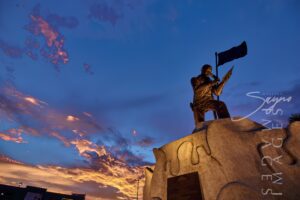


The Andres Bonifacio Birthplace Monument in Tutuban, Divisoria stands as a powerful symbol of Filipino patriotism and a tribute to the courage and leadership of Andres
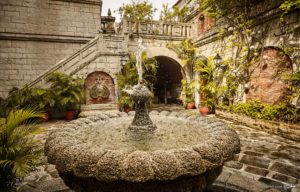


Casa Manila, located in the heart of Intramuros, Manila, is a living museum that transports visitors to the grandeur of the Spanish colonial era. As



If you’re exploring Manila and looking for more than just the usual heritage stops, make room on your itinerary for a place that blends quiet


ABOVE: Upon entering the basilica, one sees on the right a statue of Immaculate Heart of Mary and an ornate spiral staircase leading to the choir loft.
ABOVE: Upon entering the basilica, one sees on the right a statue of Immaculate Heart of Mary and an ornate spiral staircase leading to the choir loft.
On August 15, 2011, the church was further honored as a National Cultural Treasure by the National Museum of the Philippines, with the official marker unveiled on January 20, 2012. Additionally, the church was included in the Philippines’ Tentative List for possible World Heritage Site designation on May 16, 2006, due to its architectural and historical heritage. However, it was removed from the Tentative List as of 2017.












In recent years, San Sebastian Church has faced threats to its structural integrity, primarily due to rust and corrosion from sea breezes off nearby Manila Bay. In response, state funding was allocated for restoration efforts through the National Historical Institute in 1982, and the Recollect community has also invested in maintaining and restoring the church.


The church was listed on the biennial watchlist of the 100 Most Endangered Sites by the World Monuments Fund in 1998 but was not retained in subsequent lists. It was again recognized as one of the most endangered monuments globally in the 2010 World Monuments Watch, alongside the Rice Terraces of the Philippine Cordilleras and Santa Maria Church. All three sites were removed from the list in 2011 following the enactment of the National Cultural Heritage Act.


ABOVE: The young boy, standing humbly beside the revered image of the Black Nazarene, carefully extends his small hands to return a towel to a devotee. His eyes shine with quiet reverence, fully aware of the sacredness of the moment.
ABOVE: The young boy, standing humbly beside the revered image of the Black Nazarene, carefully extends his small hands to return a towel to a devotee. His eyes shine with quiet reverence, fully aware of the sacredness of the moment.
San Sebastian Church is overseen by the Order of Augustinian Recollects, who also manage the adjacent San Sebastian College-Recoletos. This stewardship ensures that the church continues to be a focal point of both spiritual and educational activities in the area.
I’m looking forward to the stories and images leaving a lasting positive impression on you, just as they have on me. Stay connected with us on social media for a weekly exploration of travel assignments and breathtaking visuals. Our focus is on championing local tourism, showcasing small businesses, and honoring the magnificence of the Philippines through the content we curate. Join us in spreading the word by clicking the ‘share’ buttons below. Your support means the world to us.
EXPLORE MORE about
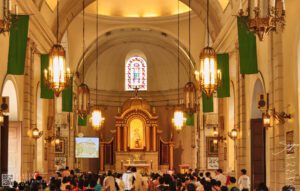

Malate Church stands as a profound symbol of faith, resilience, and artistry, preserving its sacred role and architectural splendor through centuries of triumphs and trials.
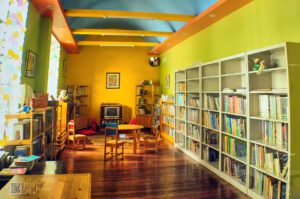

Located along Roxas Boulevard in the heart of Manila, Museo Pambata offers a one-of-a-kind experience where children can learn, play, and connect with Filipino culture


Located along Roxas Boulevard, Manila and adjacent to the century-old walled city of Intramuros, the Luneta National Park, or Rizal Park as many refer to
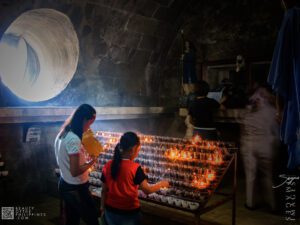

Located in the heart of Taguig City, just a short distance from the bustling Bonifacio Global City (BGC), lies the St. Anne Parish Church, more


The Nazareno Festival, or the Feast of the Black Nazarene, is one of the most spectacular and deeply moving religious events in the Philippines. Held



If you’re exploring Manila and looking for more than just the usual heritage stops, make room on your itinerary for a place that blends quiet
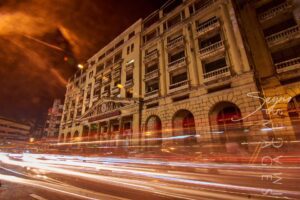

I experienced the vibrant and colorful life of downtown in full. I took some time to appreciate the beauty of Santa Cruz Church and Plaza
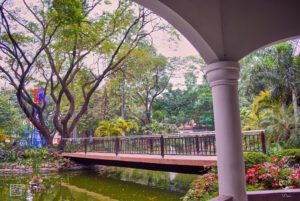

Situated in the lively heart of Makati’s Legazpi Village, Washington SyCip Park provides a serene refuge away from the city’s fast pace. Established in 2006


Located within the historic district of Intramuros, Manila, Padre Blanco Gardens—also known as Father Blanco’s Garden—offers a charming and romantic retreat amid centuries-old architecture. This
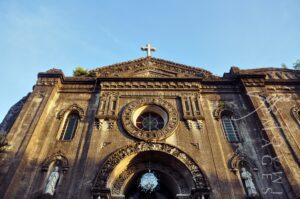

Tucked away in the bustling heart of Makati lies the Guadalupe Church Ruins, an evocative landmark that offers more than just a glimpse of the
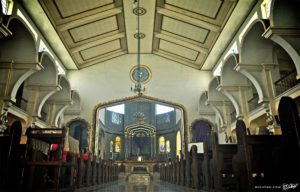

The Polo Church, formally known as the San Diego de Alcala Church, resides in the Polo neighborhood of Valenzuela, Manila. This church has a captivating


Located in the heart of Quezon City, Christ the King Seminary is not only a center of Catholic education but also a place where spirituality,


Known as one of the most important baroque churches in the Philippines and as one of the only four baroque churches in the Philippines that


The Kartilya ng Katipunan, also known as Bonifacio Shrine or Heroes Park, is a must-visit historical site in Ermita, Manila, celebrating the legacy of Andrés


The Manila Abbey San Beda, or formally known as Abbey of Our Lady of Montserrat, is a Benedictine men’s monastery located along the streets of


Located within the historical walls of Intramuros, Manila, Intramuros Golf Club is a true gem for both golf enthusiasts and history lovers alike. This iconic
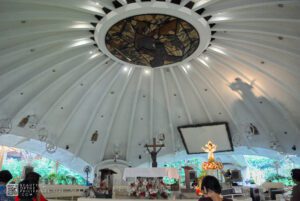

Let’s face it—Makati can be overwhelming. Skyscrapers, honking horns, back-to-back meetings, and the endless buzz of city life. But right in the middle of all
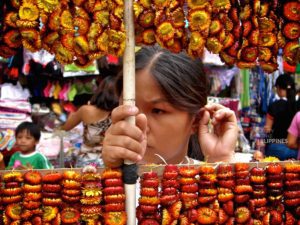

Plaza Miranda is a public square bounded by Quezon Boulevard, Hidalgo Street and Evangelista Street in Quiapo, Manila. It is the plaza which fronts the


One of Quezon City’s main parks is the Quezon Memorial Circle, which is located in Quezon City and is surrounded by an elliptical road, making
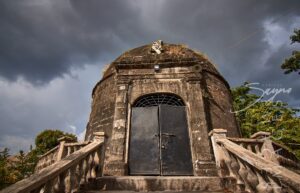

Tucked away in the heart of Taguig City, Metro Manila, lies an intriguing historical site that continues to captivate both locals and travelers alike—the Simborio.
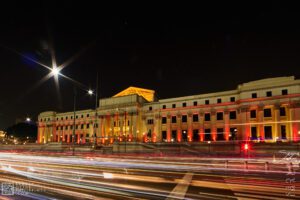

Manila, the vibrant capital of the Philippines, is home to a wealth of cultural and historical landmarks, and among its crown jewels is the National
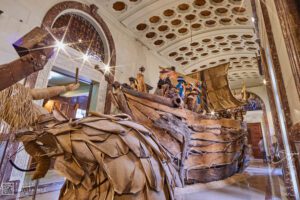

The National Museum of Anthropology, located in the heart of Manila within the National Museum Complex, is a must-visit destination for travelers eager to explore


If you’re the kind of traveler who loves uncovering places with soul — you know, spots where history, culture, and a touch of magic come
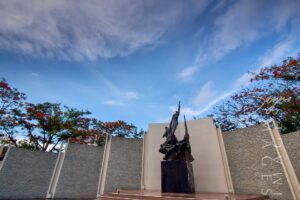

Located in the heart of San Juan City, Metro Manila, the San Juan – Pinaglabanan Memorial Shrine serves as a powerful reminder of the bravery



When you think of Manila, you probably imagine vibrant street life, Spanish-era churches, or food stalls dishing out sisig and lumpia. But just beyond the


In addition to being considered the oldest Chinatown in the world, Binondo Chinatown is also the center of trade and commerce in Manila City. In


Every January, in the heart of Tondo—one of Manila’s oldest and most storied districts—a celebration unfolds that’s unlike anything else in the Philippines. The Feast


As the nation’s first ever world-class marine theme park, Manila Ocean Park is located in Ermita Manila, within the Philippines’ largest urban resort/aqua-themed hotel complex


San Juan, a city tucked in the heart of Metro Manila, is often overshadowed by its more famous neighbors, yet it holds within its borders


In the heart of bustling Makati, where glass towers slice the skyline and business moves at lightning speed, there’s a place that feels like a


Situated in the heart of Quiapo, Manila, the Manila Golden Mosque stands as a magnificent testament to the rich cultural and religious diversity of the


Nestled at the crossroads of Las Piñas in Metro Manila and Bacoor in Cavite, the Zapote Bridge stands as a silent yet powerful witness to
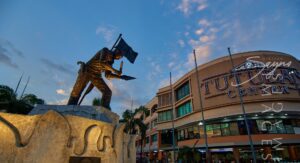

Situated in the heart of Manila, Tutuban Center is more than just a shopping destination—it’s a vibrant mix of history, commerce, and culture that draws
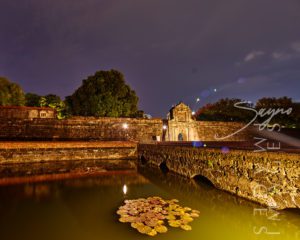

It is also known as the Walled City, and during the Spanish Colonial Period it was synonymous with the city of Manila. Intramuros was also


Explore the vibrant tapestry of Manila through its four national museums, each a unique gem in the city’s cultural crown. These four distinguished establishments are
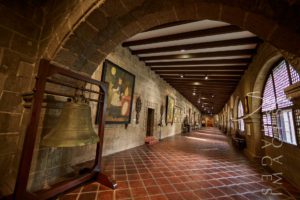

The San Agustin Museum is located adjacent to the UNESCO World Heritage Site, San Agustin Church. It is located in Intramuros—the walled city of Manila—and
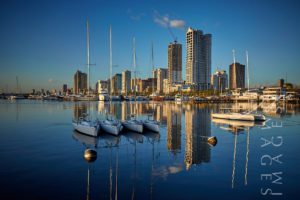

It is considered to be one of the world’s great harbors, the Manila Bay, and it serves as the Port of Manila, Philippines. Having once


Nestled in the historic district of Ermita, Manila City Hall is more than just the seat of the city’s government—it’s a testament to the rich


The University of the Philippines Diliman (UP Diliman) is more than just the country’s premier academic institution—it is a historical, cultural, and natural destination worth
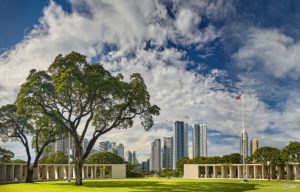

Manila American Cemetery and Memorial is located in the heart of Taguig City on the lands of Fort Bonifacio and serves as the largest grave
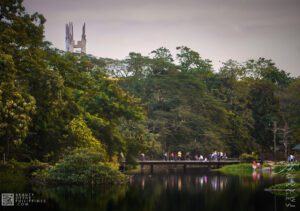

Situated in the heart of Quezon City, the Ninoy Aquino Parks and Wildlife Center (NAPWC) offers a serene retreat from the bustling streets of Metro
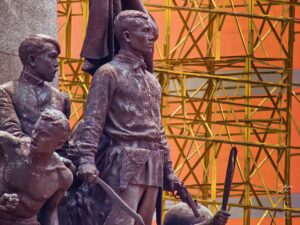

The Bonifacio Monument, also called Bonifacio Monumento or Monumento, proudly stands in Caloocan City, Metro Manila. It is a powerful symbol created by the National


Nestled in the heart of Quezon City, La Mesa Ecopark stands as a serene sanctuary, offering both a retreat for nature lovers and an educational



The Andres Bonifacio Birthplace Monument in Tutuban, Divisoria stands as a powerful symbol of Filipino patriotism and a tribute to the courage and leadership of Andres
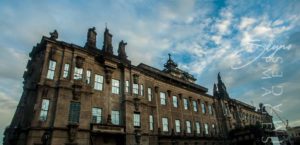

UST, also known as the University of Santo Tomas, is a private Roman Catholic university located in Sampaloc, Manila. It was founded on 28 April
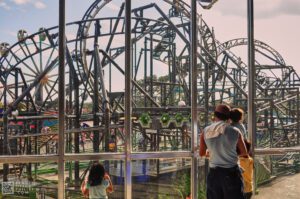

Nestled in the heart of Pasay City within the Cultural Center of the Philippines Complex, Star City stands as one of the premier amusement parks


Situated in the bustling city of Manila, Paco Park is a serene oasis that invites visitors to step back in time while enjoying the calm
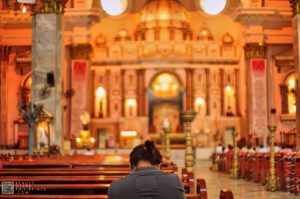

The Binondo Church is a historic church in Manila, located in the District of Binondo, near the Plaza San Lorenzo Ruiz. It was previously called
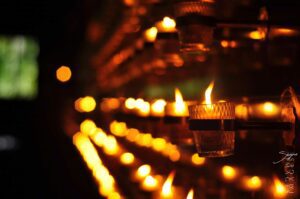

The Padre Pio Chapel, also known as the St. Pio of Pietrelcina Chapel, holds a special place in my heart as a photographer. It revealed


If you find yourself wandering through the sprawling campus of the University of the Philippines (UP) Diliman in Quezon City, you’ll undoubtedly encounter one of
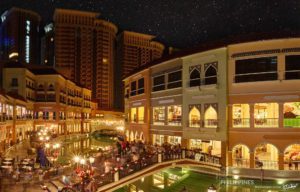

Located in the heart of the Taguig City, the Venice Grand Canal is a lifestyle mall development under the Megaworld Lifestyle Malls Located inside the
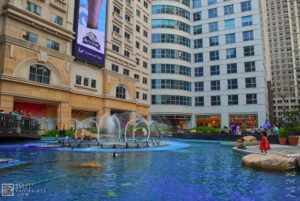

Located in the heart of Quezon City, Eastwood Mall stands as a vibrant fusion of shopping, dining, and entertainment. More than just a mall, it’s
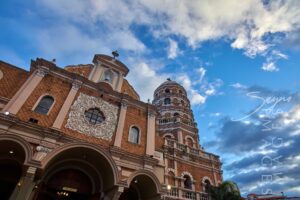

If you’re wandering through the heart of Manila and looking for a place where stories linger and time seems to slow down, Santa Cruz Church


Nestled in the vibrant district of Binondo, Manila, Plaza San Lorenzo Ruiz stands as a historical and cultural gem. Once known as Plaza Calderón de


When in Quezon City, one of the most serene and awe-inspiring places to visit is the Mount Carmel Shrine, a haven of peace, spirituality, and
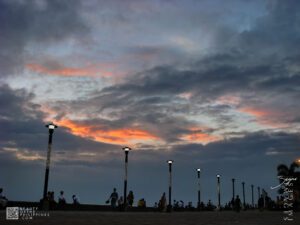

Let’s be real—when you think of tourist spots around Metro Manila, Navotas probably isn’t the first to pop into your head. But you know what?
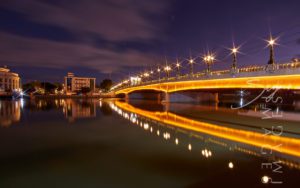

The newly restored Jones Bridge is easily recognizable by its beautifully designed black lamp posts—the same ones that were there when the bridge was first
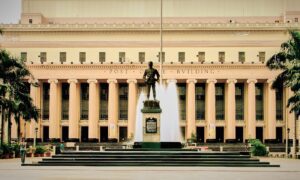

Nestled in the heart of Manila, Liwasang Bonifacio is a place where history, culture, and modern urban life converge. Formerly known as Plaza Lawton, this


If you’re exploring Manila, one spot you shouldn’t miss is Plaza Rajah Sulayman, a scenic and historically significant public square in the heart of Malate,


It is the home of the popular Asian elephant, Mali, as well as 90 other species. As well as being a landmark in Manila, the
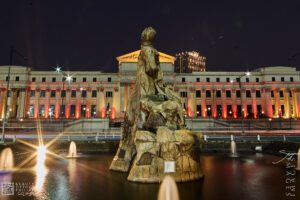

The Gomburza National Monument, located in front of the National Museum of Fine Arts along Padre Burgos Avenue in Manila, stands as a solemn tribute
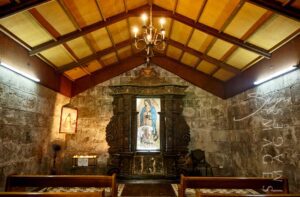

Tucked within the storied walls of Fort Santiago, a landmark that has stood as a silent witness to centuries of Philippine history, the Our Lady
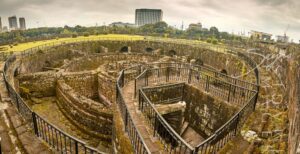

You know how sometimes, you stumble upon a place that feels like stepping straight into a history book—except the pages come alive? That’s exactly the
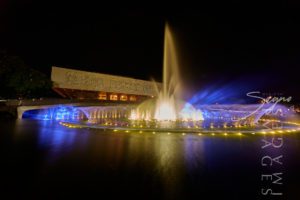

The Cultural Center of the Philippines or CCP was founded in 1966 under the directive of former President Ferdinand Marcos, in order to reinforce and


It is always a surprise for buildings, parks and houses to survive such wars as it is almost inevitable that everything will be brought down
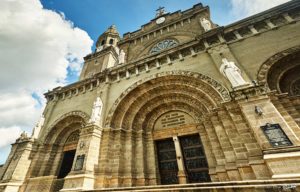

Originally built in 1880, the Manila Cathedral is the current version of the longstanding Church of Manila. It is a masterpiece of architecture that was
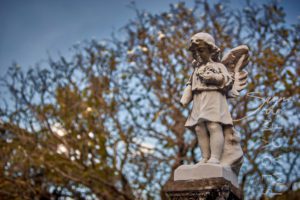

As one of the oldest cemeteries in Manila, Campo Santo De La Loma, commonly referred to as the La Loma Cemetery, is one of the


The Manila Post Office, officially known as the Manila Central Post Office, is a distinguished example of neoclassical architecture, originally designed by Juan M. Arellano,



Casa Manila, located in the heart of Intramuros, Manila, is a living museum that transports visitors to the grandeur of the Spanish colonial era. As


If you’re exploring the heart of Manila, you won’t want to miss Seng Guan Temple, a cultural and spiritual gem nestled in the bustling district
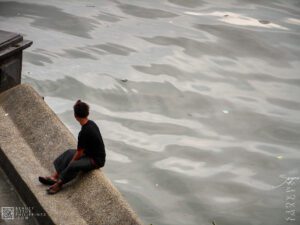

Quezon Bridge, a striking steel arch bridge spanning the Pasig River, is more than just a vital transportation link—it is a historical icon of Manila.
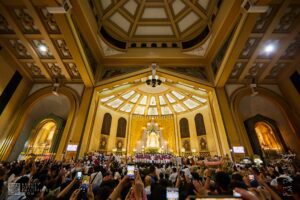

Every October, the vibrant streets of Quezon City come alive with faith, devotion, and rich cultural traditions during the Feast of La Naval de Manila.


When you think of Malabon, your mind might wander to its famous pancit, old-world charm, or those quiet, flood-prone streets filled with stories from generations
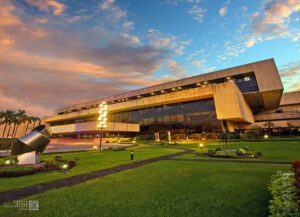

The Philippine International Convention Center (PICC) stands as a monument to the Philippines’ ambition to be a key player on the global stage. With its


Quiapo, Manila, is home to the historic Quiapo Church, officially known as the Minor Basilica and National Shrine of the Black Nazarene. This revered religious
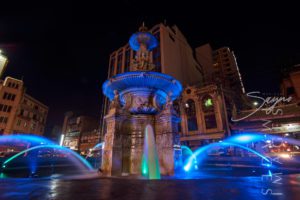

If you’re ever wandering through the lively streets of Manila, one of the city’s must-see spots is the iconic Carriedo Fountain. Nestled in the heart
BROWSE BY CATEGORIES